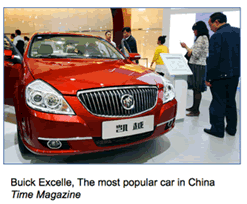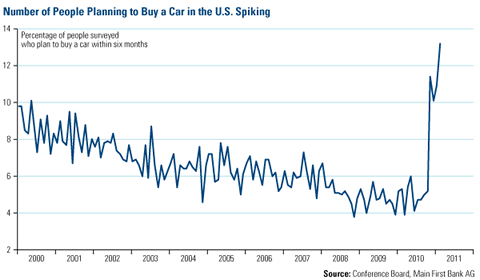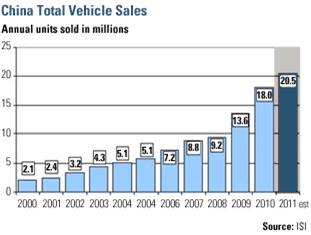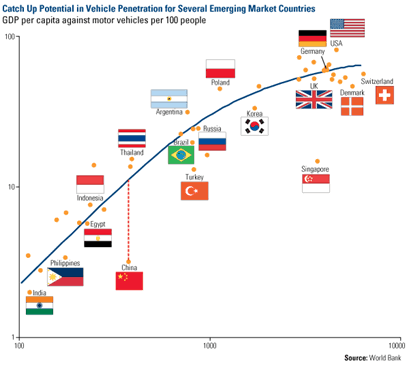Booming Global Auto Market Good For Many
Perhaps no industry has experienced a stronger recovery from the depths of the recession than the global automobile industry. Around the world, cars are rolling off the lot at a pace not seen in years. Global car ownership is expected to rise 17 percent over the next five years, according to data from J.D. Power.

In the U.S., an improving job market is giving consumers confidence to purchase big-ticket items such as automobiles. A recent survey from the Conference Board shows a record number of people (13 percent) are looking to purchase a vehicle in the next six months. That’s triple the amount of a year ago and the highest in more than a decade.

In China, the auto sector is really heating up. January total vehicles sales were up 13.8 percent on a year-over-year basis to 1.89 million vehicles, the highest monthly total on record, according to ISI Group. The firm is forecasting total sales of 20.5 million units this year, up nearly 900 percent since 2000. By 2015, ISI estimates annual sales will total 30 million units.

Two things really stand out from the rise: 1) vehicle sales rose despite a rollback in government subsidies, and 2) passenger vehicles drove sales. ISI says that “persistent double-digit per capita real income growth is creating a ‘car culture’ in China.”
While thriving, the car culture is China is still in its infancy. Currently, there are roughly 3.5 vehicles owned for every 100 Chinese citizens. However, that figure is very low compared to other countries with similar levels of GDP per capita.

You can see from this chart from Main First Bank that China and Thailand have relatively similar levels of GDP per capita, but the rate of vehicle ownership in China is significantly lower. If China were to catch up with the trend of other countries, the ratio would roughly be 10 vehicles for every 100 people. The same can be said for other countries where incomes are rising such as Turkey and India.
When you spot such a powerful trend, it’s important to look for the inter-market relationships. The demand for new automobiles is generating increased demand for auto supplies such as batteries, tires, sensors, aluminum and electronics. It is also driving demand for oil through gasoline and diesel consumption.
The infrastructure needed to handle all these vehicles is also in great demand. Roads and bridges need to be built and congested streets and highways need to be expanded and widened, driving demand for cement and steel.
The stage is set for a booming global auto market over the next several years. This could be a driver for the entire supply chain from basic commodities to high-end components.
Regards,
Frank Holmes,
for The Daily Reckoning
P.S. John Derrick serves as director of research for U.S. Global Investors and contributed to this commentary. Also, for more updates on global investing from me and the U.S. Global Investors team, visit my investment blog, Frank Talk.


Comments: